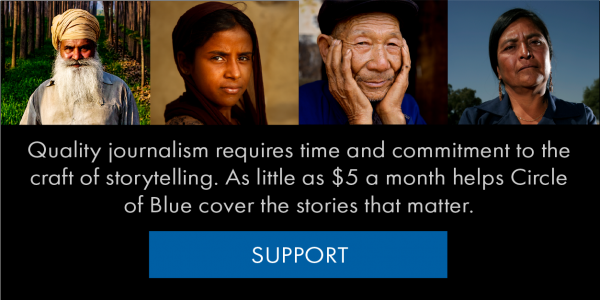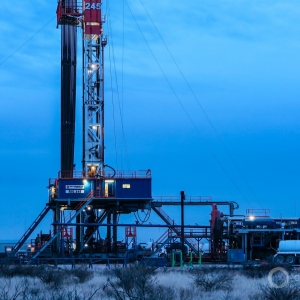The Stream, March 20: England to Face Water Shortages by 2050, Environment Agency Warns
The Global Rundown
The UK government warns that England will face water shortfalls by 2050 unless consumption patterns change. Globally, the poor pay more for water than the rich, says a new UN report. An innovative water conservation program in Maharashtra, India, fails to fend off drought. Africa’s fastest-growing cities struggle to meet water demand. Flooding in the midwestern United States worsens as floodwaters breech 200 miles of levees.
“Around 25 years from now, where those [demand and supply] lines cross is known by some as the ‘jaws of death’ – the point at which we will not have enough water to supply our needs, unless we take action to change things.” –Sir James Bevan, the UK’s Chief Executive of the Environment Agency, in reference to government projections that England will run low on water around 2050 at current water use rates. The Agency says the crisis could be avoided if water users cut consumption by a third, and water companies fix leakages and invest in new infrastructure. The Guardian
Latest WaterNews from Circle of Blue
Historic Missouri River Flood Damages Water Infrastructure — Sewage spills, pollution risks, and reduced capacity at drinking water plants.
Worst-Ever Power Outage Deepens Venezuela Water Insecurity — The country’s supply of food, water, and medicine–already scarce before the outage–has deteriorated substantially.
What’s Up With Water – Russia’s Controversial Lake Baikal Water Bottling Plant — This week’s edition of What’s Up With Water includes coverage on a controversial water bottling plant on Russia‘s Lake Baikal, a new assessment of American groundwater quality, and water interruptions in Manila, Philippines.
By The Numbers
200 Miles of levee along the Missouri River and its tributaries that have been compromised by recent flooding in the midwestern United States. The unprecedented flooding is the result of snowmelt and heavy rains, and has deluged hundreds of homes. Associated Press
In context: Historic Missouri River Flood Damages Water Infrastructure.
10 to 20 times more Amount that the world’s urban poor spend on drinking water compared to the rich, according to a the UN’s 2019 World Water Development Report. People living in slums and other low-income areas are often detached from city water systems and forced to purchase water from trucks or vendors, boosting costs substantially. The report noted that 2.1 billion people worldwide lack access to clean, continuous water, and another 4.3 billion have no access to safe sanitation facilities. Deutsche World
Science, Studies, And Reports
The UN estimates that the population of Africa will double by 2050, and an increasingly large proportion of people will live in urban areas. Many of Africa’s rapidly-growing cities–including the capitals of Ghana, Mozambique, Zimbabwe, and the Ivory Coast–are already struggling to provide water to their residents. In Accra, Ghana, some residents have been without running water for two years. Bloomberg
On The Radar
The government of Maharashtra, India, implemented a water conservation scheme meant to store water in rainy years and combat water scarcity in dry years. The ambitious project, which has cost millions of rupees so far, is faltering, however, as 151 of Maharashtra’s administration blocks slip into drought. Critics say the plan is failing because many areas of Maharashtra were already facing water shortages, and rainfall has not been heavy enough to jumpstart the scheme. BBC
In context: HotSpots H2O, December 10: Inequality Fuels Water Quarrels in India’s Second Most Populous State.
Kayla Ritter is a recent graduate of Michigan State University, where she studied International Relations and Teaching English to Speakers of Other Languages. She is currently based in Manton, Michigan. Kayla enjoys running, writing, and traveling. Contact Kayla Ritter








Leave a Reply
Want to join the discussion?Feel free to contribute!